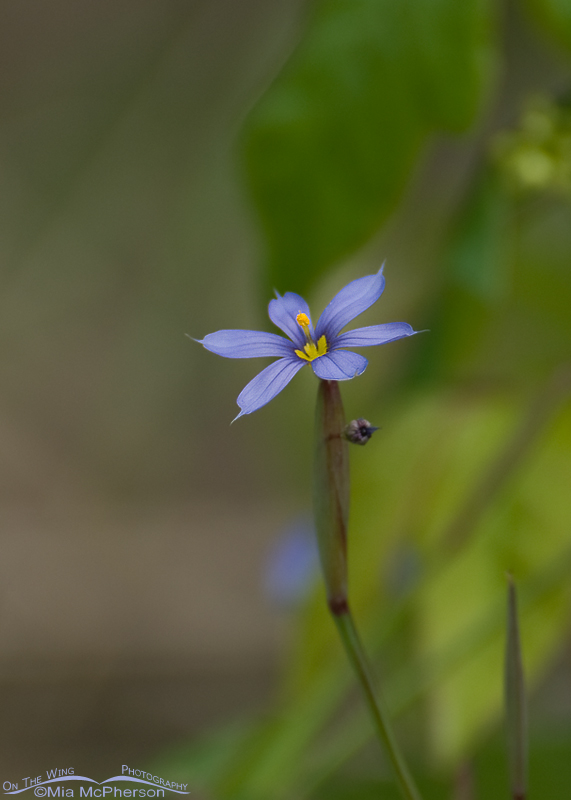 Blue-eyed Grass – Nikon D200, handheld, f6.3, 1/400, ISO 200, Nikkor 80-400mm VR at 400mm, natural light
Blue-eyed Grass – Nikon D200, handheld, f6.3, 1/400, ISO 200, Nikkor 80-400mm VR at 400mm, natural light
Last week I was Thinking Pink so this week I thought I would focus on the shades of blues found in wildflowers, birds, the sky and seas. Blue-eyed Grass (Sisyrinchium angustifolium) is one of my favorite blue wildflowers from the eastern United States. Blue-eyed Grass isn’t actually a grass at all, it is from the Iris family and may have gotten the “Grass” part of its name because the leaves are very thin and grass-like. I found and photographed this beauty under the pines of the Osprey Trail at Honeymoon Island State Park in Florida.
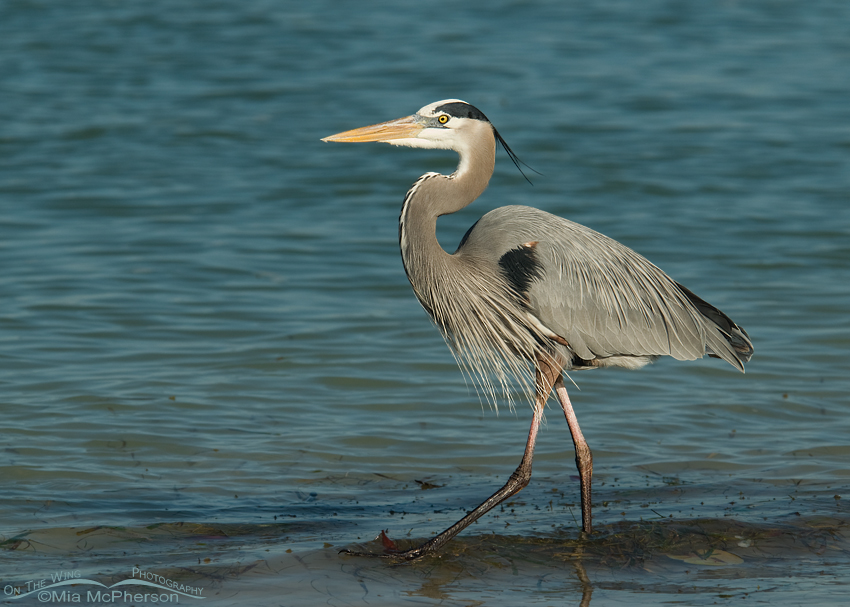
Great Blue Heron in the Gulf of Mexico – Nikon D200, handheld, f6.3, 1/1000, ISO 200, Nikkor 80-400mm VR at 230mm, natural light
It seems to me that Great Blue Herons (Ardea herodias) are misnamed because they are more gray than they are blue, in fact when I see a Great Blue Heron posted on line that is very blue I scratch my head because they really aren’t that blue. I photographed this Great Blue Heron as it walked along the shoreline of the Gulf of Mexico at Fort De Soto’s north beach in Florida.
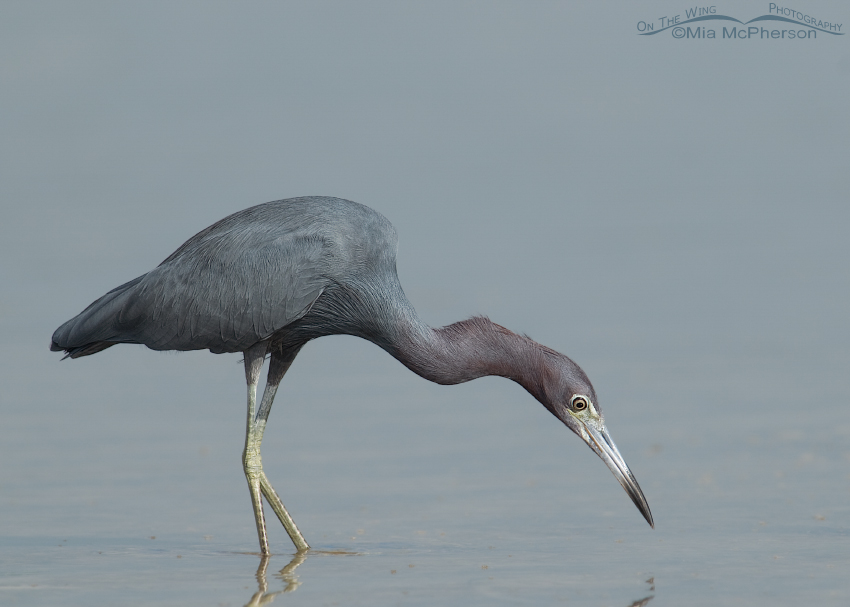 Little Blue Heron stalking prey in a tidal lagoon – Nikon D200, handheld, f7.1, 1/640, ISO 200, Nikkor 80-400mm VR at 360mm, natural light
Little Blue Heron stalking prey in a tidal lagoon – Nikon D200, handheld, f7.1, 1/640, ISO 200, Nikkor 80-400mm VR at 360mm, natural light
Little Blue Heron (Egretta caerulea) adults are more blue than Great Blue Herons, at least from the base of the neck to their tails, their necks have a reddish cast to them. I was sitting in the lagoon with the Little Blue Heron approached me while it was stalking and hunting prey at Fort De Soto County Park in Florida.
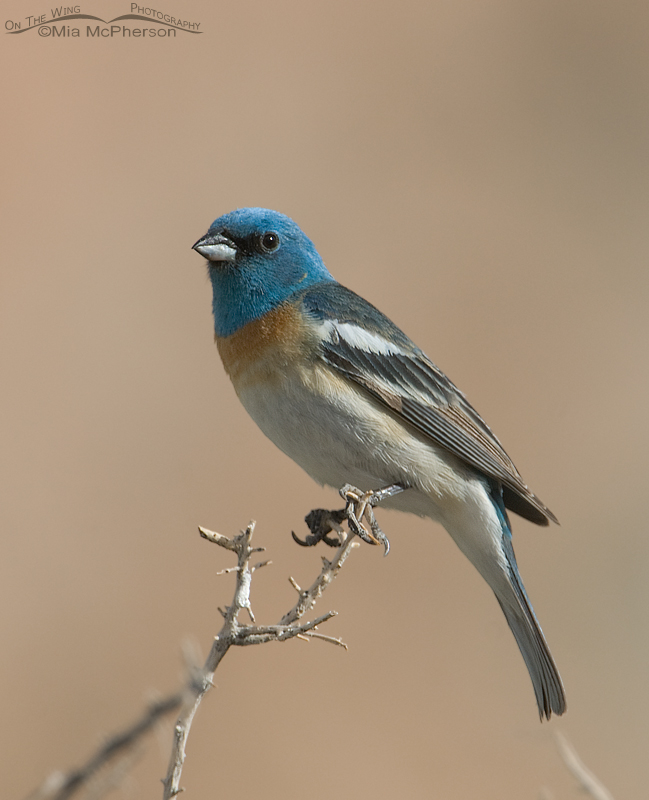 Male Lazuli Bunting – Nikon D200, f8, 1/500, ISO 250, Nikkor 200-400mm VR with 1.4x TC at 400mm, natural light
Male Lazuli Bunting – Nikon D200, f8, 1/500, ISO 250, Nikkor 200-400mm VR with 1.4x TC at 400mm, natural light
Male Lazuli Buntings (Passerina amoena) have a gorgeous azure blue head as well as some blue on other parts of their bodies. The word “lazuli” come from the semi-precious gemstone Lapis Lazuli which comes in various shades of blue with gold colored specks. I photographed this Lazuli Bunting in the San Rafael area of Utah and the background is the color of sandstone found in that area.
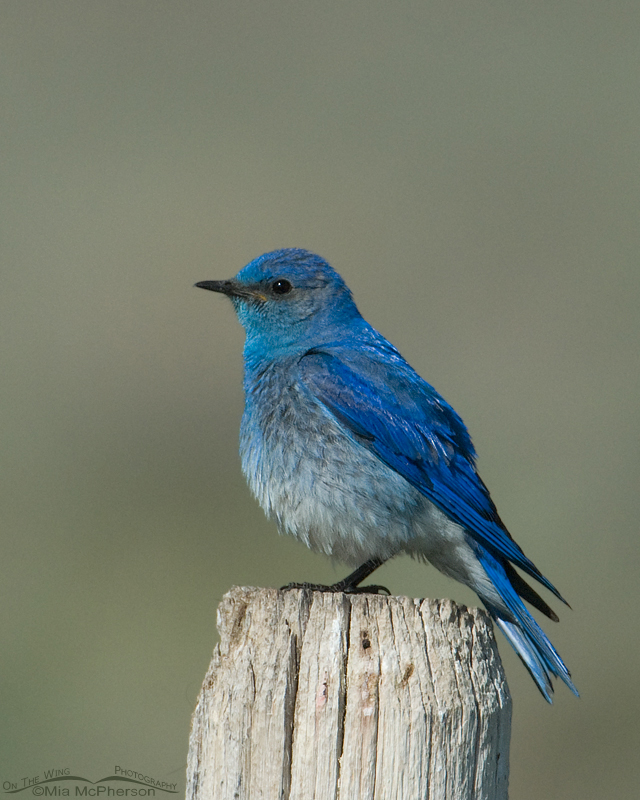 Mountain Bluebird male in the Centennial Valley – Nikon D200, f6.3, 1/2500, ISO 500, -0.3 EV, Nikkor 200-400mm VR with 1.4 TC at 400mm, natural light
Mountain Bluebird male in the Centennial Valley – Nikon D200, f6.3, 1/2500, ISO 500, -0.3 EV, Nikkor 200-400mm VR with 1.4 TC at 400mm, natural light
Mountain Bluebirds (Sialia currucoides) are one of the bluest bird species I have photographed, especially the males. I didn’t add any color saturation to this image at all, this is how blue the bird looked in the light conditions I had at the time I took this image at Red Rock lakes National Wildlife Refuge in Montana. The males during the breeding season are a rich, vibrant blue.
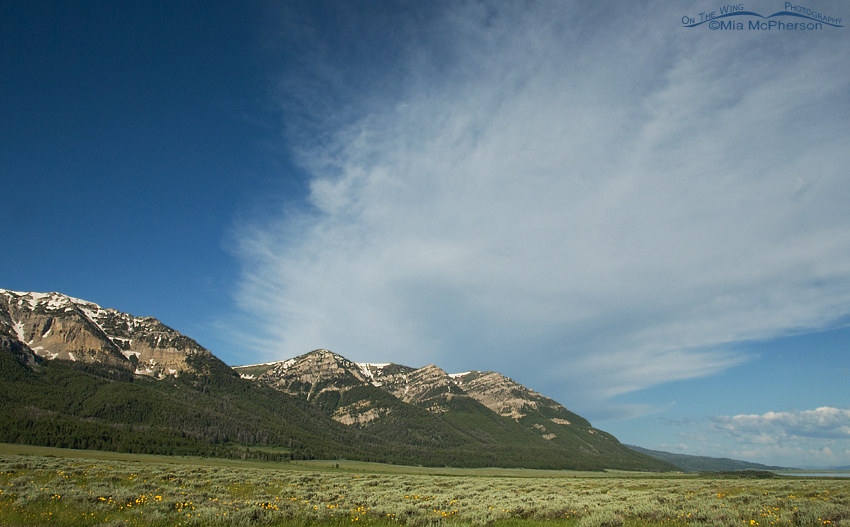 Blue skies at Red Rock Lakes National Wildlife Refuge, Montana – Nikon D200, handheld, f20, 1/160, ISO 400, +0.3 EV, Nikkor 18-200mm VR at 18mm, natural light
Blue skies at Red Rock Lakes National Wildlife Refuge, Montana – Nikon D200, handheld, f20, 1/160, ISO 400, +0.3 EV, Nikkor 18-200mm VR at 18mm, natural light
Some of the bluest skies I have ever seen have been at Red Rock Lakes National Wildlife Refuge in southwestern Montana where on a clear (or not so clear) day you can see for miles & miles. I loved how this wave of clouds fanned out in this frame and added a nice contrast to the blue tones in the sky.
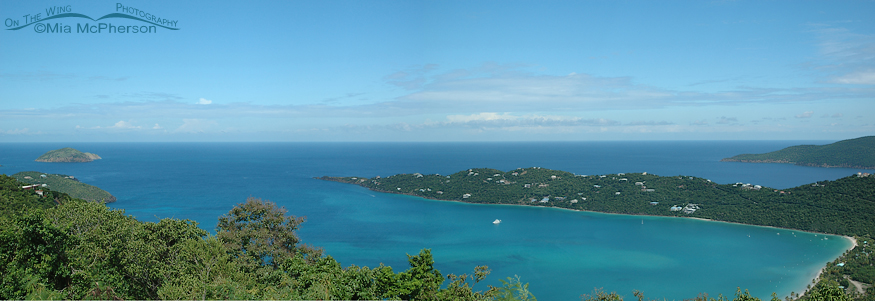 Amazing blues of Magens Bay, Saint Thomas, USVI – No techs, this is a panorama made from several images that were joined together
Amazing blues of Magens Bay, Saint Thomas, USVI – No techs, this is a panorama made from several images that were joined together
The colors of the seas and oceans have always drawn me to water because they can vary from the palest aquamarine to deep royal blues and everything in between. Magens Bay in Saint Thomas and the Atlantic Ocean beyond it give this image wonderful shades of blue that I find very soothing and it brings back nice memories of my stay on the island.
Shades of blue…
Mia


Thanks much for the comments everyone!
I enjoyed the pink series, and love this one just as much!
Definitely like the the blues, especially nice to see colours other than dirty snow at this time of year. Made me feel good looking at all of them. Thank you.
I love love love this post. What a great idea. And only you, with so many photographs, could present so many different forms of blue. Again, I love it.
Beautiful Mia, I love the pano shot and all of them. I also think the Green Heron is more blue than green, and they named it Green, so there are a couple of misnomers with these bird names. The same happens with plants, there are several “rose” names that are not even roses.
Wonderful collection of images Mia..thanks
You gather together such a fascinating range of photos but all of them highlight the beauty in nature. A wonderful collection, Mia.
Beautiful images, the herons, Bluebird, Bunting and the Blue-eyed Grass, superb.
So I wonder if the great blue heron got it’s name from the blue on their cere when they are in breeding plumage? I have many mountain bluebirds around here and a pair that nest every year in my garage soffett which is fun and the male’s blue will change intensity (I’m sure you know this) depending on how sunny and clear the sky is. Love your blues and the flower is really stunning.
All gorgeous and I love the Lazuli Bunting.
All of them are gorgeous! I love the grass flower!
ohhh so beautifull !
i discover the Male Lazuli Bunting and the moutain bluebird, very nice species
have a good day mia ☼
What an awesome post, I love the Blue-eyed grass, the mountain views and I so remember St Thomas. Just beautiful
Beautiful photos Mia. I’m looking forward to our Eastern Bluebird returning and blue skies!